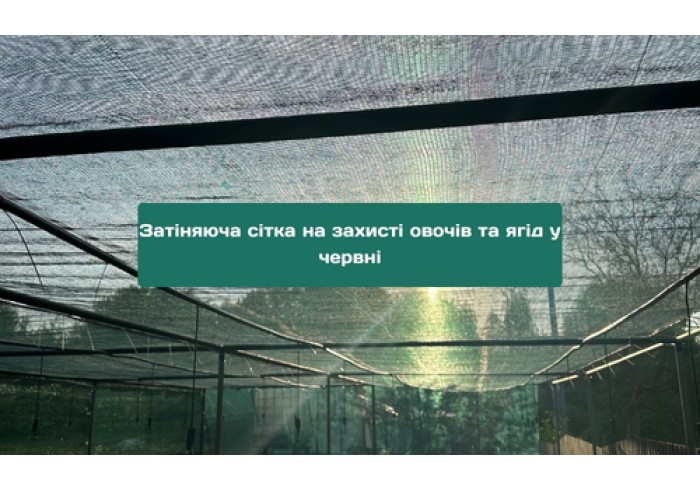Shading Net: Protecting Vegetables and Berries in June
The first month of summer brings the joy of actively ripening vegetables and berries. However, the hot weather creates serious challenges for growing these crops. Under such conditions, the Agreen shading net becomes an irreplaceable tool for farmers. It helps protect plants from harmful environmental factors and preserve the harvest.
June Weather Conditions and Their Impact on Agriculture
In June, the duration of daylight reaches its maximum, and solar radiation becomes most intense. Moreover, the sun remains near its zenith for most of the day, and its rays strike plants at a direct angle.
Air temperatures often exceed comfortable levels, leading to:
-
severe plant stress, slowing growth and development;
-
disruption of the photosynthesis process;
-
excessive moisture evaporation;
-
sunburns on leaves and fruits;
-
premature ripening of vegetables and berries;
-
loss of crop flavor;
-
reduced yield.
Crops especially sensitive to excessive sun exposure include tomatoes, peppers, cucumbers, cabbage, strawberries, and raspberries.
June poses risks not only due to heat but also sudden thunderstorms. Hailstorms, in particular, can destroy an entire harvest in just a few minutes.
Advantages of Using a Shading Net
In Ukraine’s unstable climate, more and more farmers choose to purchase shading nets due to their unique properties and comprehensive benefits:
-
Protection from excessive sunlight – The net diffuses and evenly distributes light, reducing its intensity.
-
Temperature regulation – Under the scorching June sun, air and soil temperatures can reach critical levels, negatively impacting the root system and the plant’s overall condition. The net lowers the temperature by 3–7 °C and reduces fluctuations, creating a more stable microclimate.
-
UV protection – The material filters harmful ultraviolet radiation, preventing sunburn.
-
Moisture retention – High temperatures accelerate water evaporation from the soil and leaves. The net slows this process, reducing irrigation needs and conserving water.
-
Protection from hail and strong winds – Especially those with a higher shading percentage act as a physical barrier, shielding crops from wind gusts and mechanical damage, reducing the risk of fruit injury.
-
Increased yield and quality – Plants grown under optimal conditions experience less stress and show greater resistance to pests and diseases. As a result, they produce juicier and tastier fruits.
-
Protection from pests and birds – A garden shading net can partially protect crops from birds and certain pests (aphids, whiteflies, codling moths), acting as a physical barrier.
Economic Efficiency
Investing in plant protection pays off within the first season due to:
-
15–25% increase in yield;
-
improved product quality;
-
reduced irrigation costs;
-
fewer losses from sun damage;
-
extended harvesting period.
How to Choose the Right Shading Net
When planning to buy a shading net for vegetables, it’s essential to consider the crops you grow. Different plants require different shading levels:
-
40–45% – For sun-loving crops that don’t tolerate direct rays (tomatoes, peppers, eggplants);
-
50–60% – For cucumbers, leafy greens, herbs, and berry bushes sensitive to overheating;
-
70–80% – For newly planted seedlings and transplants requiring maximum protection.
Heavier material with 85–90% shading allows minimal sunlight through and is not used in agriculture. Instead, it is suitable for shading leisure areas to provide comfort for people.
Crop-Specific Protection Tips
-
Berry crops are highly sensitive to overheating. During intense heat, berries wilt and lose flavor. A 50–60% shading net helps protect them and maintain both taste and marketable quality.
-
Lettuce, spinach, arugula require warmth but bolt quickly in high temperatures. A 60–70% net can extend the harvesting season.
-
Tomatoes love heat and sunlight, but direct rays and extreme June heat can halt fruit setting and cause sunburn, leading to dry, tasteless fruit. A 40–50% net helps maintain flavor, juiciness, and appearance.
-
Cabbage needs both moisture and sunlight to form tight, juicy heads. Overheating leads to wilted leaves and soft heads. A 40–45% net is sufficient to protect it from excessive sunlight.
Installation Guidelines
Install the shading net 1.5 to 2 meters above the crops to allow proper air circulation. Use strong supports and reliable fasteners that can withstand significant wind loads.



